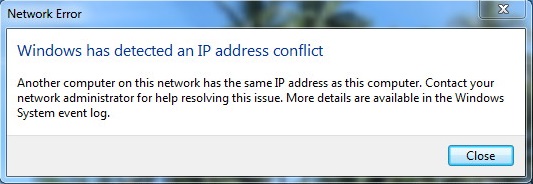The Windows operating system encounters an error with Kmode Exception Not Handled. BSOD (Blue Screen of Death) error, halt error, Bug Check error, or a Kernel Error error are all terms used to describe it. Microsoft Windows displays the Stop Problem screen after a system-wide error occurs.
It’s when the system software that keeps track of computer hardware and software resources and delivers common services to all of your computer programmes breaks down to the point that it can no longer function properly.

Contents
Understanding Kmode Exception Not Handled:
Kmode Exception Not Handled is a Blue Screen of Death (BSOD) error that occurs when the kernel mode process or driver encounters an exception that it cannot handle. This error typically results in a system crash, leading to a sudden restart or shutdown to prevent potential damage to your system.
Read Also:
- Kohls Com Activate
- Service Registration is Missing or Corrupt
- WiFi Doesn’t Have A Valid IP Configuration
Causes of Kmode Exception Not Handled:
Several factors can contribute to the occurrence of the Kmode Exception Not Handled error:
- Faulty Device Drivers: Outdated, incompatible, or corrupted device drivers can trigger this error, especially if they are responsible for kernel-level operations.
- Hardware Issues: Faulty hardware components, such as RAM modules, hard drives, or graphics cards, may lead to instability in the system, resulting in the Kmode Exception Not Handled error.
- Software Conflicts: Incompatible or malfunctioning software, including third-party antivirus programs, system utilities, or recently installed applications, can conflict with the kernel mode processes and cause the error.
- System File Corruption: Damage or corruption to critical system files, such as those related to the Windows kernel, can lead to instability in the operating system and trigger BSOD errors like Kmode Exception Not Handled.
- Overclocking: Overclocking the CPU or GPU beyond their stable limits can result in system instability and cause BSOD errors, including Kmode Exception Not Handled.
Methods To Fix ‘Kmode Exception Not Handled’ In Windows 10
Method 1: Error Message: Uninstall the Driver Shown in the Error Code
When a problem occurs, the operating system displays an error message that identifies the specific driver responsible. You must remove the driver whose name appears in order to get around the problem.
Install the most recent version of the driver that you previously removed from your system. Uninstall the driver that is causing the issue by following these steps:-
Step 1: To access the list of available services, press Windows Key + X.
Step 2: Select “Device Manager” from the list that appears.
Step 3: Afterwards, you can uninstall the specific driver that was mentioned in the error notice.
Step 4: Uninstall the driver, then re-download the newest version from the website.
Step 5: Make sure your computer has the most up-to-date driver software.
This is the final step.
The Kmode Exception Not Handled Error should be resolved if you follow the procedures outlined above, but if it persists, try the other solutions listed below.
Method 2: Defragment Your Computer’s Memory.
Exception in Kmode If you don’t have enough memory space in your machine, the Not Handled error in the discussion can also occur. Insufficient memory space is shown if your system isn’t working properly or frequently.
Windows can be tricked into thinking it lacks vital resources if a mistake is made in the registry. Memory can be freed up in the following ways:
Step 1: Make sure you have enough free RAM or disc space.
Step 2: Delete any files you don’t want.
1. Take a look at the Control Panel in the Start menu. Select Internet from the Control Panel menu. The Internet Options dialogue window opens with several tabs.
2. Activate the General Tab. Select Delete All Temporary Internet Files from the Temporary Files group box and then click Apply. To close the Internet Options window and the Windows Control Panel, click Close.
3. Take a look in the Start menu’s search bar. Click Find Now after typing *.TMP into the Name box. Right-click the file and pick Delete from the menu to delete it.
4. Open your local hard drive (typically drive C) by clicking on My Computer. Go to the Windows folder and open it. The box called “Show All Files” may need to be checked). Delete any files that aren’t required to keep your system running from the temporary folder.
Remove any unnecessary folders from your hard disc. Remove an application from the Windows Control Panel before uninstalling its programme directories.
Step 3: Identify the programme that consumes the majority of the system resources.
1. Close all open programmes and save your work.
2. Close programmes by pressing CTRL + ALT + DELETE.
3. Select the End Task option for each programme you want to close (except for Explorer and Systray). Please keep in mind that Explorer and Systray must be left open.
4. After shutting down each programme, have a look at how much of your system resources have been freed up. My PC > Properties > Performance displays this graph.
5. Try to replicate the memory issue. Identifying the source of the problem is critical if the error occurs only when a specific software is running. Restarting the computer may be all that is needed to fix an issue. You should get in touch with the application’s creator if you’re having trouble with a specific programme.
Step 4: Defragment and Defragment the HDD
To thoroughly clean your hard drive, perform these steps:
Step 1: SCANDISK can be found under Start > Programs > Accessories > System Tools.
Step 2: When you’re in the ScanDISK main dialogue box, pick the Thorough checkbox. Click Start after ensuring that SCANDISK is configured to scan all of your local hard drives. Sit tight and let SCANDISK work its magic on fixing any hard disc issues you may have.
Terminate any open applications.
Step 3: Select the Disk Defragmenter from Start > Programs > Accessories > System Tools.
Step 4: Click Start in the main dialogue box of Disk Defragmenter to begin defragmenting all of your local hard discs. Turn off your computer once defragmentation is complete.
Make sure that the driver is up-to-date by following these steps:
As a result of utilising outdated drivers, your OS can encounter an error message titled “Stop”. The safest way to update your system’s driver is to do it in safe mode first. Follow these procedures to get the latest version of your driver:
Step 1: Press the Windows Key + X at the same time and select Device Manager from the context menu that appears.
Step 2: In the Device Manager, find and choose Other Devices in the left pane.
Step 3: Right-click on the Unknown Device and select “Properties” (the probable cause of your BSOD)
Step 4: Click the Update Driver button.
Step 5: As a last step, click on “Search automatically for updated driver software” in the screen that appears.
Step 6: Wait for the drivers to be updated before continuing.
Step 7: Force a restart of your PC.
Method 4: Check for Errors in Safe Mode with Networking
Checking for problems on a machine in safe mode is as follows:-
Step 1: Turn on the computer and push a key.
Step 2: Choose to have your computer repaired.
Step 3: Select Troubleshoot from the drop-down menu.
Step 4: Select the “Advanced” tab.
Step 5: The next step is to choose the startup options.
Step 6: On the bottom right, you’ll see a restart button.
Step 7: To enter safe mode, press F4, F5, or F6 on your keyboard.
To repair the Kmode Exception Not Handled problem, enter safe mode with networking and then try again.
Prevention Tips:
To prevent encountering the Kmode Exception Not Handled error in the future, consider implementing the following preventive measures:
- Regular System Maintenance: Perform regular system maintenance tasks, such as updating device drivers, installing Windows updates, and scanning for malware, to keep your system optimized and secure.
- Avoid Overclocking: Refrain from overclocking your CPU or GPU beyond their stable limits to prevent system instability and BSOD errors.
- Use Reliable Software: Install and use reliable software from trusted sources to minimize the risk of software conflicts and compatibility issues.
- Backup Important Data: Regularly back up important files and data to an external storage device or cloud storage service to protect against data loss in the event of a system crash or hardware failure.
Frequently Asked Questions (FAQ) about Kmode Exception Not Handled in Windows 10:
1. What is Kmode Exception Not Handled in Windows 10?
Kmode Exception Not Handled is a Blue Screen of Death (BSOD) error that occurs when the kernel mode process or driver encounters an exception that it cannot handle. It typically results in a system crash and restart.
2. What causes the Kmode Exception Not Handled error?
Common causes of this error include faulty device drivers, hardware issues, software conflicts, system file corruption, and overclocking.
3. How can I fix the Kmode Exception Not Handled error?
You can fix this error by updating device drivers, checking hardware components for issues, uninstalling problematic software, running a System File Checker (SFC) scan, and performing a memory diagnostic test.
4. Can Kmode Exception Not Handled be prevented?
While some causes of the error may be unavoidable, preventive measures such as regular system maintenance, avoiding overclocking, using reliable software, and backing up important data can help minimize the risk of encountering this error.
5. Is Kmode Exception Not Handled specific to Windows 10?
No, Kmode Exception Not Handled can occur on various versions of the Windows operating system, including Windows 10, as it relates to kernel mode processes and drivers encountered in the Windows kernel.
Read Also:


